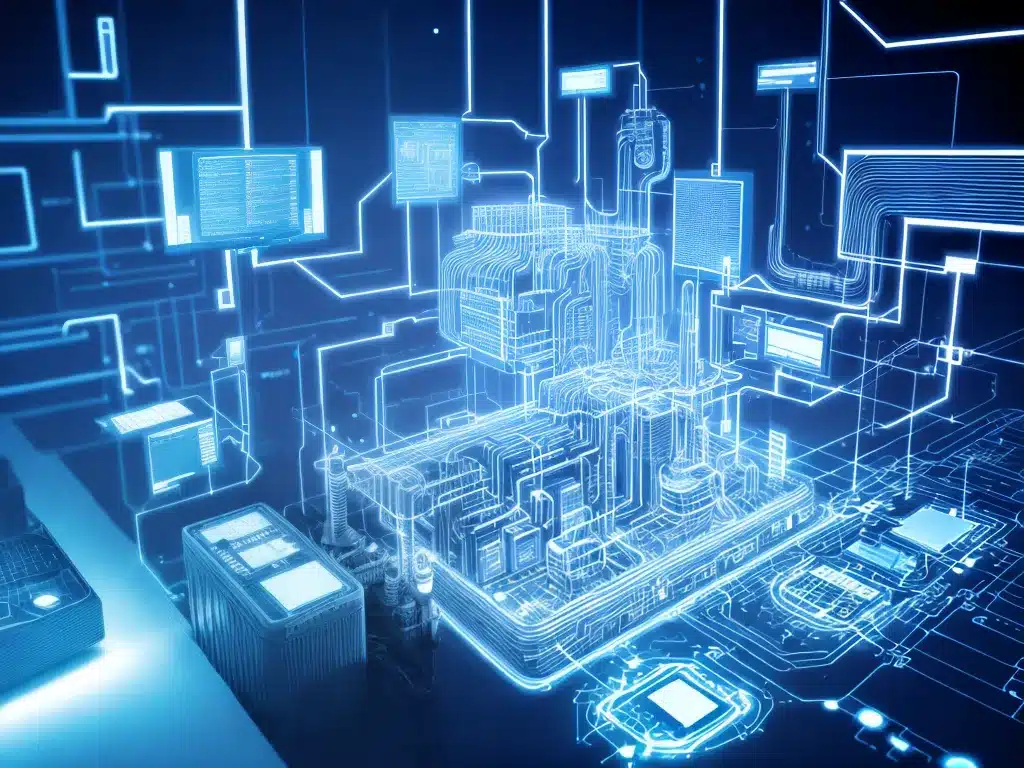
The Rise of Industrial IoT and Industry 4.0
Introduction
The Fourth Industrial Revolution, also known as Industry 4.0, is transforming manufacturing through the application of smart technology and interconnectivity. I will examine the key drivers propelling this transformation, including the Internet of Things (IoT), along with the main benefits and challenges facing manufacturers.
What is the Industrial Internet of Things (IIoT)?
The Industrial Internet of Things (IIoT) refers to the use of network-connected sensors, instruments, and other devices to collect, analyze, and share data within an industrial setting. IIoT enables manufacturing equipment, assets, and processes to communicate and exchange data with one another and with centralized systems. This connectivity and data exchange allows for enhanced monitoring, control, optimization, and automation of operations.
Some key characteristics of IIoT include:
-
Networked sensors and devices – These generate data on operations and product quality. Sensors can monitor vibration, temperature, pressure, etc.
-
Connectivity – Wired and wireless networking connects assets and systems together. Cellular, Wi-Fi, Bluetooth, and Ethernet are common methods.
-
Data collection and exchange – Sensor data is aggregated, analyzed, and shared securely between machines, systems, and users.
-
Remote monitoring and control – IIoT allows assets to be monitored and managed remotely using web and mobile applications.
-
Advanced analytics – Collected data can be analyzed to gain insights, identify patterns, and make predictions using AI and machine learning algorithms.
-
Automated processes and control – Analyzing data enables intelligent automation and control of manufacturing operations.
Drivers of IIoT Adoption
Several important factors are driving manufacturers to adopt IIoT solutions:
-
Cost reductions – Optimizing processes through data analysis reduces waste and energy consumption. Breakdowns can be prevented through predictive maintenance.
-
Productivity gains – IIoT improves asset utilization through better monitoring and scheduling. It also allows faster reconfiguration of production lines.
-
Agility and flexibility – Smart connected machines enable more flexible manufacturing and rapid design changes. Smaller lot sizes become economical.
-
Quality improvements – Sensors facilitate constant real-time monitoring of product quality at every production stage. Issues can be addressed quickly.
-
Innovation – IIoT enables development of new business models, smarter products, and introduction of new data-driven services.
-
Customer expectations – Increasingly customers expect manufacturers to deliver smart, connected products with additional services based on collected data.
Key Benefits of Implementing IIoT
Adopting IIoT delivers significant benefits across manufacturing organizations:
Enhanced Operational Efficiency
- Preventive maintenance avoids equipment failures
- Improved asset utilization with better scheduling
- Lower energy costs through monitoring and optimization
- Reduced quality issues through real-time quality control
Flexible and Agile Production
- Faster reconfiguration of production lines
- Smaller lot sizes become economical
- Easier customization of product variations
- Automation enables 24/7 production with less labor
Data-driven Insights and Improvements
- Optimization of processes and procedures
- Identifying areas for quality and efficiency improvements
- Developing new data-enabled services and revenue streams
New Business Opportunities
- Offering usage or outcome-based billing models
- Development of new smart products and services
- Direct integration into customer’s business processes
- Closer customer relationships and loyalty
Challenges in Implementing IIoT
While the benefits are immense, manufacturers need to address some key challenges:
-
Significant upfront investment – Sensors, connectivity, IT infrastructure, and applications require capital expenditure.
-
Data security – Protecting confidential data is paramount, requiring cybersecurity strategies.
-
Data management – Vast amounts of data need robust IT systems for collection, storage, and analysis.
-
Legacy equipment integration – Older equipment may need modifications to work with new IIoT systems.
-
Organizational culture – Adopting new digital practices requires changes to workplace culture and training.
-
Technical skills gap – New talent with analytics and data science expertise may be required.
-
Interoperability – Lack of common standards can hamper connectivity between different applications and systems.
The Future with IIoT
IIoT adoption is gaining momentum globally across manufacturing industries. According to IDC, worldwide spending on IIoT solutions will reach $140 billion by 2021. Manufacturers are piloting and implementing IIoT applications including predictive maintenance, asset tracking, self-optimizing production, and industrial big data analytics.
In the future, IIoT will enable manufacturers to tightly integrate their value chain from suppliers to customers. Smart connected products will change business models to services and outcome-based offers. While IIoT is still evolving, it is undoubtedly a transformative force in manufacturing. Companies need to embrace this shift to remain competitive. With thoughtful strategy and execution, industrial enterprises can navigate the challenges and harness the power of IIoT.












